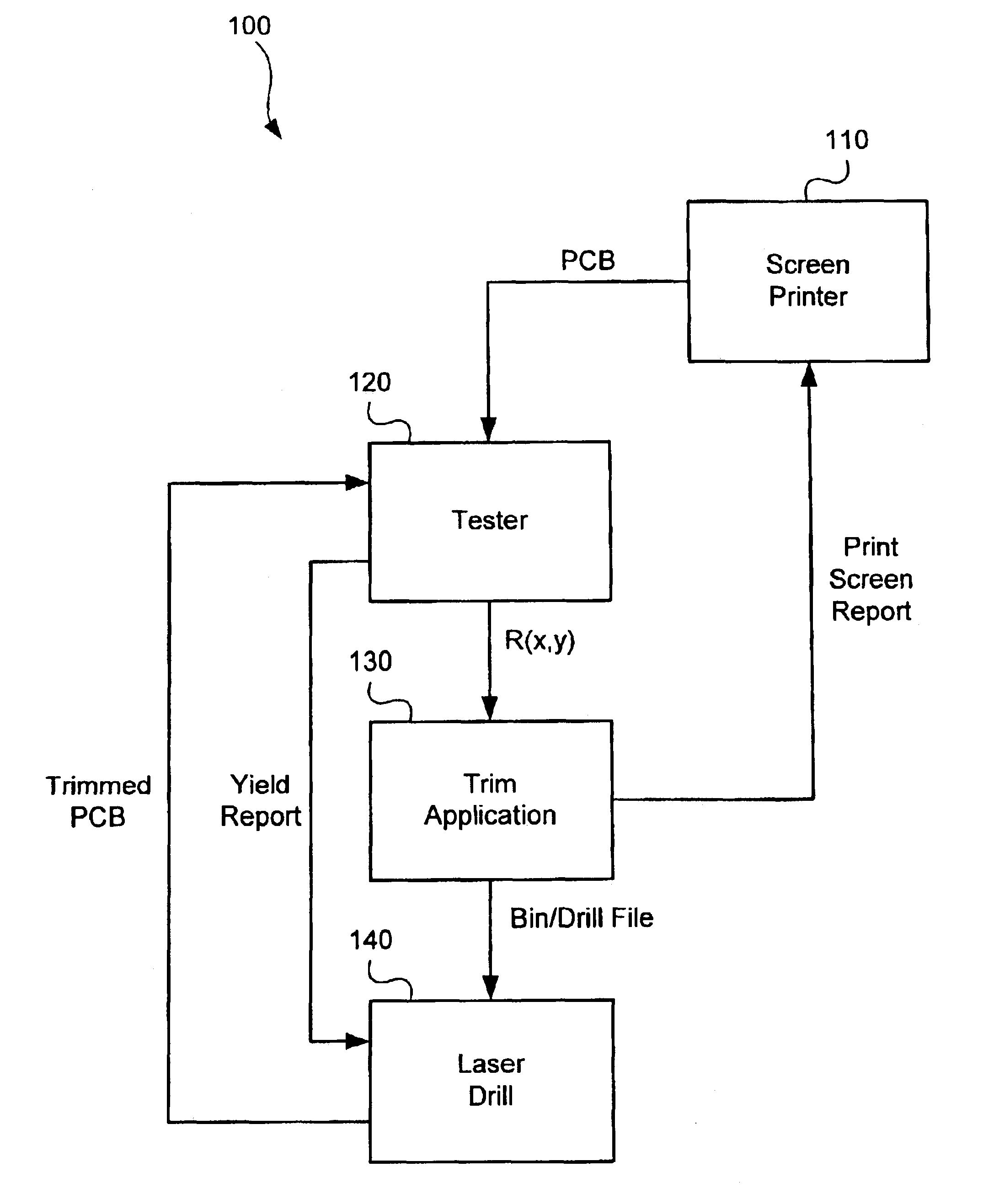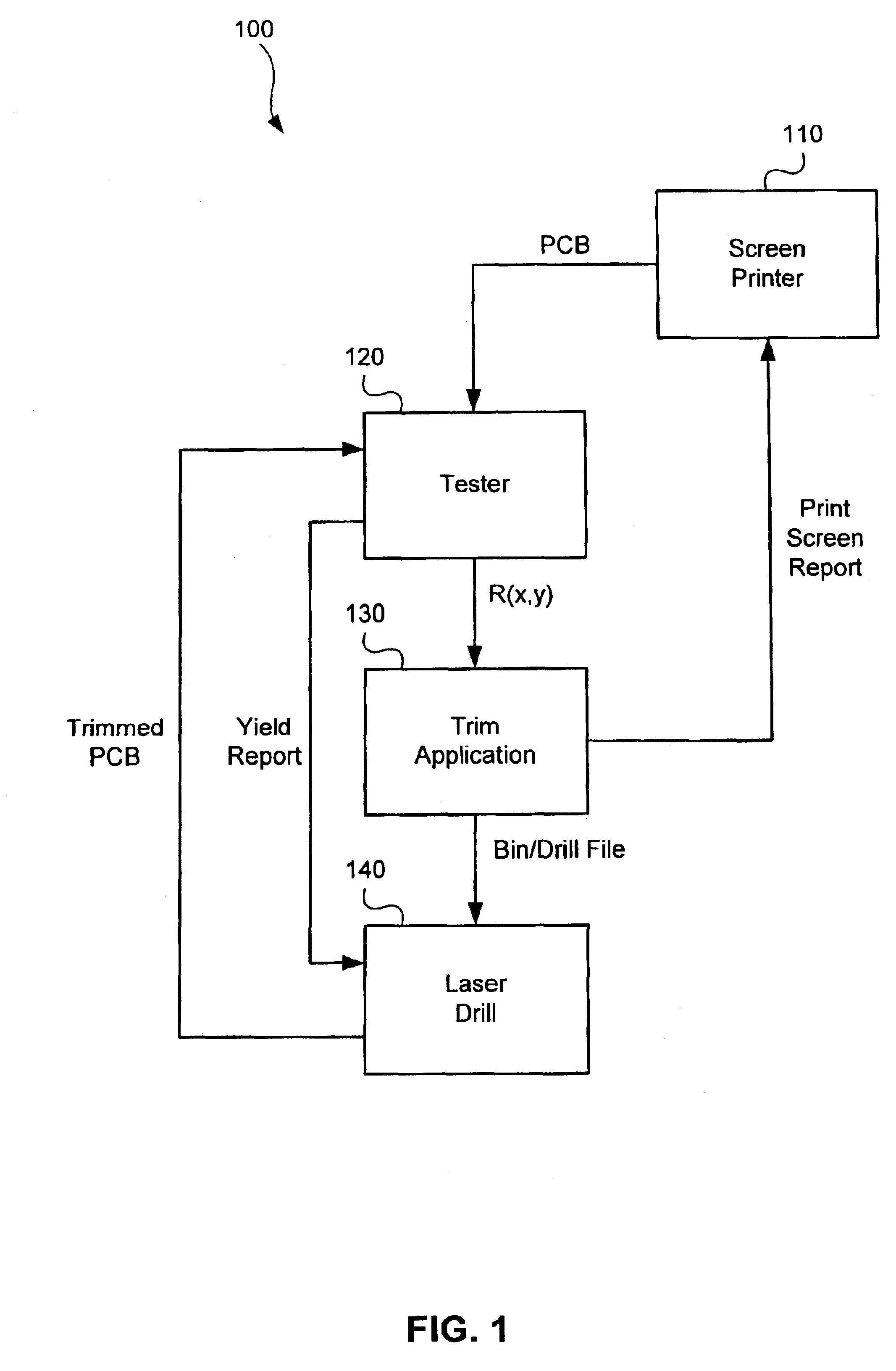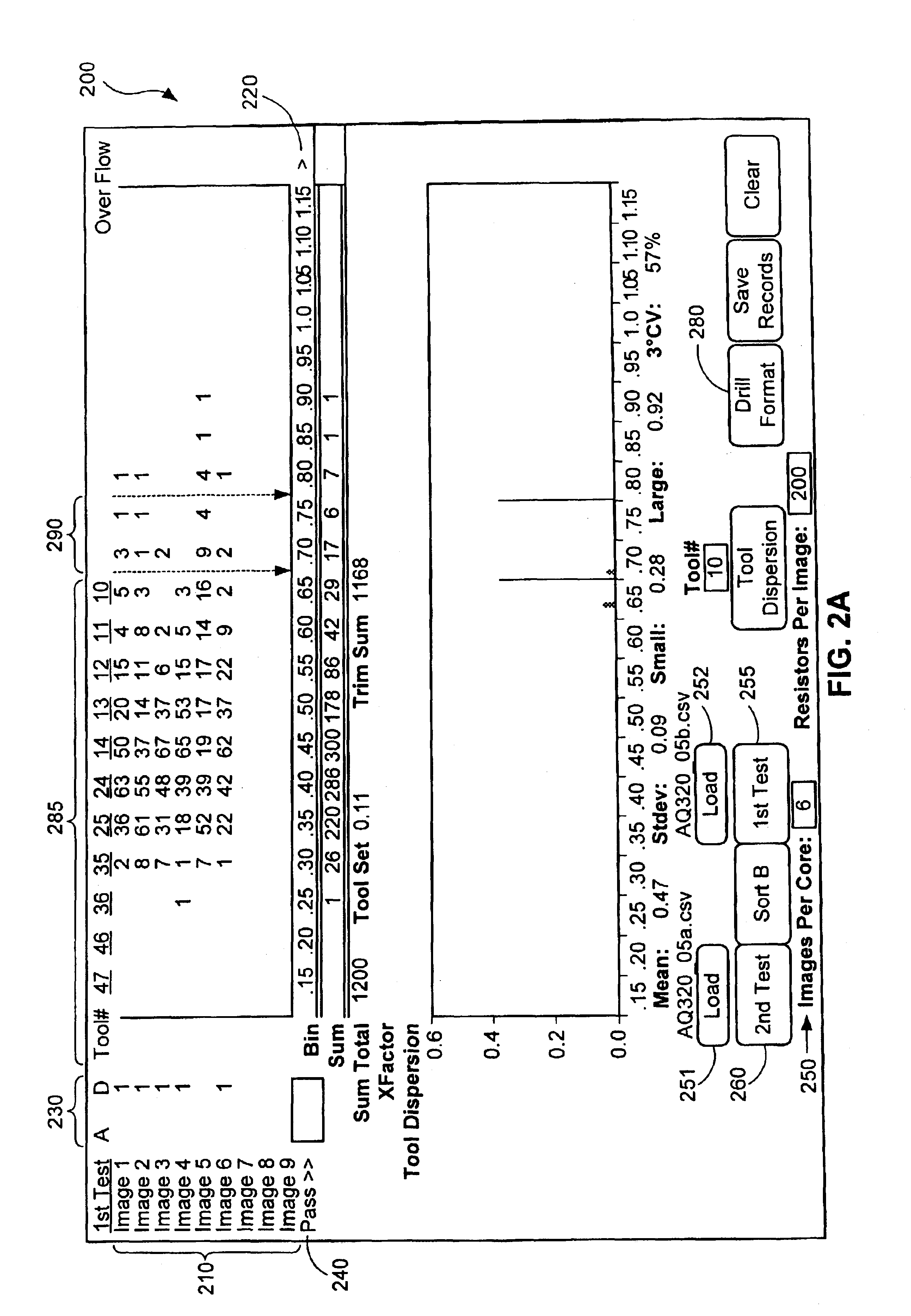Laser trimming of annular passive components
a technology of annular passive components and laser trimming, which is applied in the direction of removing conductive materials by irradiation, manufacturing tools, instruments, etc., can solve the problems of affecting the time-consuming task of selecting the laser trimming setting for each resistor can be avoided, and the failure of the circuit board manufacturer to correct defects at a later time. , to achieve the effect of enhancing the performance of laser trimming, reducing equipment costs, and avoiding the time-
- Summary
- Abstract
- Description
- Claims
- Application Information
AI Technical Summary
Benefits of technology
Problems solved by technology
Method used
Image
Examples
Embodiment Construction
[0017]Embodiments of the present invention provide systems and methods for laser trimming of annular passive components on a printed circuit board. The following description is presented to enable a person skilled in the art to make and use the invention. Descriptions of specific applications are provided only as examples. Various modifications, substitutions and variations of the preferred embodiment will be readily apparent to those skilled in the art, and the generic principles defined herein may be applied to other embodiments and applications without departing from the spirit and scope of the invention. Thus, the present invention is not intended to be limited to the described or illustrated embodiments, and should be accorded the widest scope consistent with the principles and features disclosed herein.
[0018]Referring to FIG. 1, a block diagram of an exemplary system in which the principles of the present invention may be advantageously practiced is illustrated generally at 10...
PUM
| Property | Measurement | Unit |
|---|---|---|
| resistance | aaaaa | aaaaa |
| power | aaaaa | aaaaa |
| resistance value | aaaaa | aaaaa |
Abstract
Description
Claims
Application Information
 Login to View More
Login to View More - R&D
- Intellectual Property
- Life Sciences
- Materials
- Tech Scout
- Unparalleled Data Quality
- Higher Quality Content
- 60% Fewer Hallucinations
Browse by: Latest US Patents, China's latest patents, Technical Efficacy Thesaurus, Application Domain, Technology Topic, Popular Technical Reports.
© 2025 PatSnap. All rights reserved.Legal|Privacy policy|Modern Slavery Act Transparency Statement|Sitemap|About US| Contact US: help@patsnap.com



